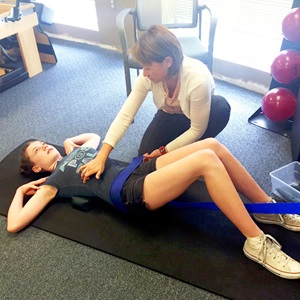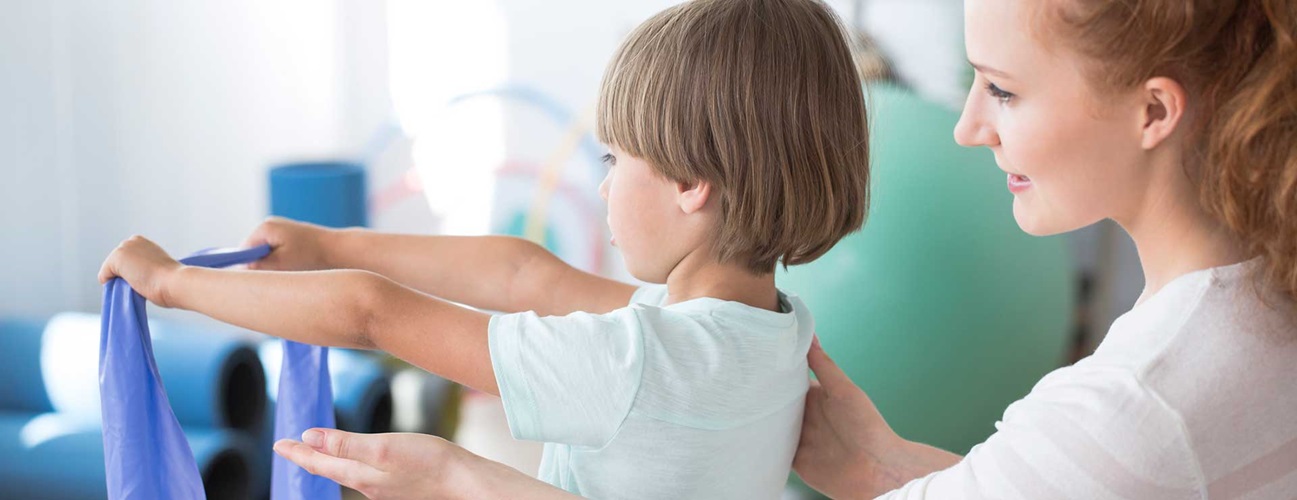Schroth Method for Scoliosis
The Schroth Method is a physical therapy approach to scoliosis treatment. It is based on exercises tailored to each patient’s spine curvature.
What You Need to Know
- Schroth exercises may benefit patients of all ages, regardless of the severity of scoliosis.
- A Schroth-trained physical therapist or specialist should guide you in learning the Schroth Method.
- The duration of a Schroth program varies, and you are expected to continue exercises at home to keep scoliosis in check.
What is the Schroth Method?
The Schroth Method is a nonsurgical option for scoliosis treatment. It uses exercises customized for each patient to return the curved spine to a more natural position. The goal of Schroth exercises is to de-rotate, elongate and stabilize the spine in a three-dimensional plane. This is achieved through physical therapy that focuses on:
-
Restoring muscular symmetry and alignment of posture
-
Breathing into the concave side of the body
-
Teaching you to be aware of your posture
This approach to scoliosis treatment was developed by Katharina Schroth and further popularized by her daughter Christa. Born in Germany in late 1800s, Katharina Schroth had scoliosis that was unsuccessfully treated with bracing. She developed her own breathing technique and exercises to manage her scoliosis. She and her daughter opened a clinic, where they treated more than 150 patients at a time.
What are Schroth exercises for scoliosis?
Scoliosis is a complex condition. From the back, it looks like a sideways curve in a C or an S shape. But what you don’t see with a naked eye is how the vertebrae in the spine rotate as they form a curve. Spaces between the vertebrae may also become compressed in some areas and stretched in others. That’s why physical therapy for scoliosis requires a 3-D approach to address the curve from all angles.
The spine rotation in scoliosis is different in each person. Schroth exercises are tailored to your unique curvature of the spine. The exercises can be performed while standing, sitting or lying down. Props such as therapy balls, poles and Schroth bars can also be used to assist in correcting scoliosis.
Schroth exercises, although different from person to person, include three important components:
Muscular Symmetry
The changes in the curvature of your spine also affect the muscles in your back. On one side of the back the muscles may weaken and waste away. On the other side, the muscles may be overworked and prominent. Schroth exercises are designed to address both problems, aiming to achieve muscular symmetry.
Rotational Angular Breathing
Breathing is an important part of the Schroth Method. The method uses a special breathing technique called rotational angular breathing. The idea is to rotate the spine with breathing to help reshape the rib cage and surrounding soft tissue.
Awareness of Your Posture
Katharina Schroth relied heavily on mirrors in her original practice. Mirrors helped her patients develop awareness of their posture. Being aware of the position of your spine is the first step to correcting it. Postural awareness is especially important when it comes to activities of daily living. If you have scoliosis, you will always need to be mindful of the positions that may make it worse.
Physical Therapy for Scoliosis: Sophie's Story

Sophie’s mom noticed her daughter’s scoliosis during a quick test that any parent can do at home. Thanks to Sophie’s early diagnosis, nighttime bracing and Schroth exercises guided by physical therapist Peiting Lien, Sophie can keep scoliosis in check without surgery.
What results can be expected after completing a Schroth program?
Most patients see visible improvement in the degree of their spine curvature after completing a Schroth program. The length of the program may vary, but typically includes between five and 20 sessions. Traditionally, the sessions were several hours long and were set in a tight daily schedule. Today, Schorth programs are usually less intense and include shorter sessions spread over a longer period. At Johns Hopkins, our sessions typically last from 45 minutes to an hour. The length and frequency largely depend on the patient’s tolerance and the extent of the scoliosis.
Besides the correction of the curve, outcomes of a Schroth program may include:
-
Improved posture
-
Improved core stability and strength
-
Easier breathing
-
Less pain
-
Improved overall movement pattern and function
-
Improved self-management and understanding of the spine
-
Better pelvis alignment
The main goal of Schroth exercises is to prevent scoliosis from advancing. Depending on your age, bone maturity and the degree of curvature, bracing may also be a part of the treatment. Schroth-specific breathing complements the bracing as children are taught to breathe within their custom brace. Managing scoliosis with the Schroth Method and bracing may be an option for patients who want to avoid surgery. However, a long-term commitment to the Schroth guidelines is necessary to make this treatment successful.





